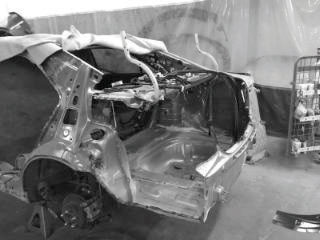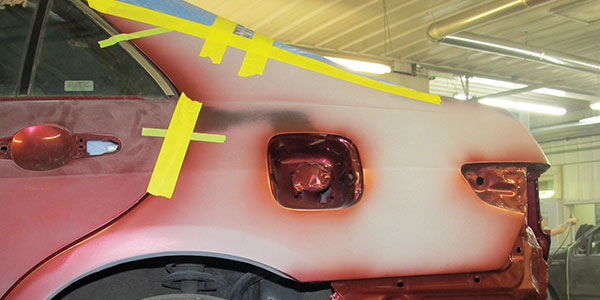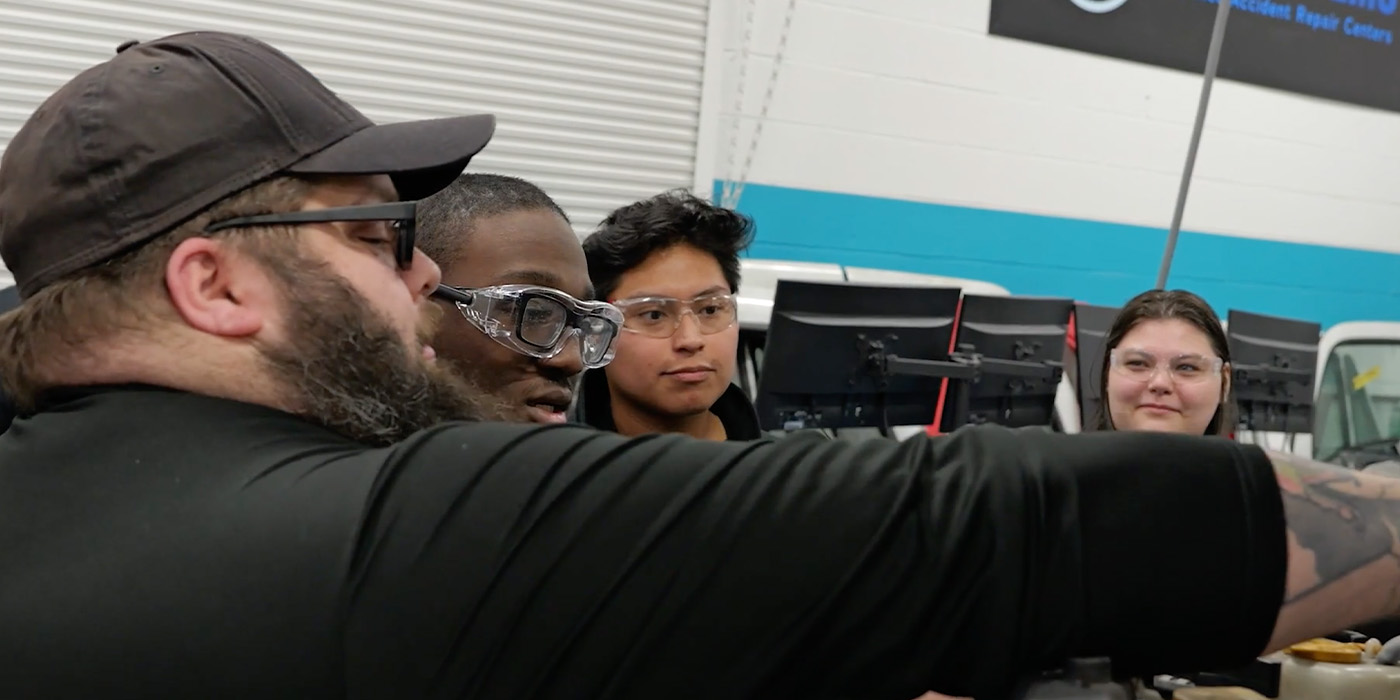
Can you afford to miss damage on a car or truck? During the initial estimate, either during disassembly or pre-op, locating damage can be difficult. New designs in vehicle structures are being used. Also, new and stronger construction materials are being used in the front structure or in the upper and lower rails. And that’s not to mention the changes in the rear of vehicle designs. All these changes add up to a more difficult task.
Finding the damage by measuring during the pre-op or disassembly stage will help to find that damage up front versus finding it during the repair and adding headaches and confusion. This can be the difference between profit and loss for a shop, and can also make a difference to cycle time. Not to be excluded is the damage done to shop morale. These types of situations frustrate us all.
Crush Zones
When a vehicle got into a collision back in the good ol’ days, most damage was regulated to the area of impact. Metals and plastics got crushed. We knew and understood crush and crumple zones. These zones offered a cushioning effect to absorb energy.
As vehicles changed and speeds of crashes increased, crush zones were found to offer inadequate protection in some crashes. Airbags improved greatly, preventing injuries and increasing survivability. New seat belt designs also absorbed energy. This kept damage near the areas of direct impact. The amount of damage frame time was mandatory to replace parts and was usually scaled once it was on the frame rack. This was kind of a known factor, and time on the rack was accommodated. All this crushing brought impact into occupant compartments, causing concern for automakers and safety groups. The crushing into the occupant compartment was not a good thing.
Energy Transfer
There was a certain amount of energy transfer being used with crush and crumple zones. Instead of crushing, the area was made stronger to transfer the energy from the front of that zone to the rear, bypassing the occupant compartment.
As designs in vehicle safety improved to keep that crush away from the occupant compartment, more energy transfer was being used, particularly in the front crash areas of vehicles. Now we see a great shift in where damage occurs. More energy transfer occurs, moving through the vehicle and away from occupants. This creates damage farther away from the direct contact area. So this brings up the question: How are you finding that damage?

Crash Dynamics
This change from crush and crumple zones to more of a crush cap design keeps the energy from collapsing the occupant compartment. Energy transfer during the crash plays a key role in new vehicle safety. Knowing where that energy goes during a crash becomes a critical piece of estimating. Visual indicators may not be there to see where damage has occurred. Indicators such as door gaps and panel gaps may not show damage. Visual indicators on frame rails may be subtle and hard to see. This is where measuring for damage becomes a more important step. A vehicle may have been in a much more severe crash than the damage indicates. Don’t be fooled by the limited damage appearance of some vehicles.
Repair or Replace?
As the steels become stronger for energy transfer, the repairability also changes. A rail that’s stronger is also more brittle. This makes the repair more complicated as heat may not be able to be used to repair. A bend in the front of a rail may be able to be cold straightened following vehicle manufacturer guidelines, but look farther into that rail. By measuring, you may find that there is damage farther in. This damage may require rail replacement. Finding this damage before a vehicle goes into the repair stream is critical. Finding this damage later, and therefore having to stop work on the vehicle, costs everyone. What complications would arise from missing this damage completely?

Getting Underneath
Finding damage in new vehicles also requires getting underneath the vehicle. When you measure during pre-op to find damage, you also get a good view of the underside of the vehicle. Let’s say a vehicle is up on a rack and you’re measuring for damage and you find a rail pushed back 6mm. Now, 6mm may not sound like much, but the problem is it’s a lot. If a strut tower is moved 6mm, that damage can be almost impossible to align on a wheel. As an industry, we need to find that 6mm.
I’ve seen vehicles where a rail was pushed 6mm in. After measuring, we found the rail had kinked right in front of the floor. The damage was very hard to see as the undercoating and seam sealer — not to mention the suspension — was in the way. Had it not been measured out, we may not have known where to look. Nobody would have guessed that the damage was that far away from the direct contact area. The vehicle also didn’t look that damaged. It was still driveable. It was later discovered that the collision actually occurred at a fairly high speed. It was found before the repair started that the rail needed to be replaced versus repaired.
Measuring
I go to many shops and see frame racks not being used, and my tendency is to ask why. The most common answer I get is that most repairs requiring the replacement of parts don’t necessarily need the rack. I find that apparent when I see part fit-up issues and gaps on headlights and bumper covers. “Why not use it for estimating for damage?” I ask. That’s when I usually get the “deer in the headlights” look. They ask, “why?” This response leads me to believe that damage may be missed. Missed damage is missed repair time and work for a shop. I’ve heard where shops miss $150 to $250 per estimate in labor for not looking up instructions. I wonder how much gets missed because nobody measured to find the damage? That’s a lot of lost revenue. It’s also dangerous.
Measuring During Repairs
Many technicians assume that if everything fits up correctly during repairs, it must be right. Although it can work, it can also create huge problems when it does not.
Measuring when welding structural parts on a vehicle is such an important step. It does take time, but it really makes a difference. So many times, I’ve seen techs on the floor and not measuring. I realize we may have technicians that could do this, but too many times I see everyone doing it. It becomes a shop issue.
Measuring during repairs is a great way for shops to be sure quality repairs are being performed.
New Systems
New measuring systems that can be used on the floor or on a hoist, not just dedicated to the frame rack, are an option. Some are fairly reasonably priced. A good measuring system can pay for itself in not only finding damage, but speeding up repairs as they become easier to use. Demo a unit or look into training and try one out. It might just be a worthwhile venture.
Summary
The tolerances by vehicle manufacturers are getting closer and closer to zero. Using a measuring system during repairs becomes a critical step to performing a quality repair.
Gaps and part fit-up are tighter and tighter. If a technician is even in tolerance, it may cause a problem later on. It’s time consuming, but is becoming more and more of a requirement to have the efficiency desired by shops during repairs. We need to keep using these tools. Never underestimate the value of measuring for estimating and during repairs.
Best Practices
- Update your frame rack. Make sure all updates are in and the measuring system is working. Check all targets to make sure they’re correct. It’s a headache and expensive, but it needs to be done.
- Use for estimating. Structural damage may exist in a vehicle, but not be seen during disassembly.
- Never assume or take for granted. Look up instructions through vehicle manufacturers or online information systems.
- Use estimating quick checks. If a check shows a problem, verify up front before it becomes a problem later.
- Take equipment manufacturer training to learn to use your measuring system quickly and efficiently.
- Use a hoist or rack. Get the vehicle off the ground and check underneath for damage.














